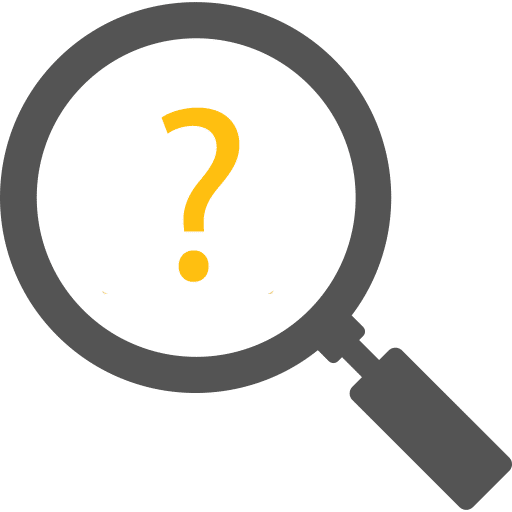Unlocking the Mysteries of SEO Entities
In the world of SEO and the internet, standing out and making a mark is no less than solving a complex puzzle. Every business, big or small, is vying for that coveted spot at the top of search engine results, where visibility translates to growth and success. This is where your understanding of entities comes into play.
Entities represent a pivotal shift in SEO, moving from a focus on keywords to prioritizing context and relationships among words. In essence, entities are specific, definable things or concepts. Unlike standalone keywords, they bring a deeper layer of understanding to search engines by connecting related words and concepts, providing a richer, more relevant user search experience. This shift towards entities means that the context in which words are used is now paramount, influencing not only search results but also user engagement and content visibility. It’s not just about what words are used, but how they’re interconnected and understood in the broader digital landscape. Keyword research is still important but this evolution underscores the importance of strategically implementing entities in SEO to ensure content is not only found but also contextually relevant and valuable to the user.
Welcome to a journey with iias – International Internet Advertising Services Inc., your guide in unraveling the mysteries of SEO entities. Specializing in SEO services, we’re here to shed light on the intricacies and potentials that lie within this framework of understanding. For those seeking to transform their online presence, understanding SEO entities will futureproof your SEO.
Table of Contents
Defining the Enigma: What Are SEO Entities ?
Navigating through the digital landscape requires a solid understanding of SEO entities, crucial components that significantly impact online visibility and user engagement. Let’s delve into understanding what these entities are and why they’re indispensable in SEO strategies.
Unveiling SEO Entities
SEO entities are specific, identifiable concepts or things with clear meanings in a digital context. Unlike keywords, entities carry a wealth of information and context, enabling search engines to comprehend and relate various pieces of content within its vast knowledge graph. Entities can range from tangible elements like people and places to intangible aspects like ideas or topics. They play a vital role in enhancing the search engine’s ability to understand user intent and deliver relevant results, thereby improving user experience and satisfaction.
The Essence of Entities in SEO
Entities serve as a backbone in SEO, providing a framework that helps search engines sift through, understand, and connect vast amounts of online content. They facilitate a deeper understanding of content, allowing search engines to discern context and relevance, thereby delivering results that are not only accurate but also meaningful to the user. In SEO, entities help bridge the gap between mere keyword matching and delivering contextually relevant content, ensuring that the results are not only visible but also valuable to the user.
As we move forward, understanding and leveraging the power of entities will be pivotal in enhancing SEO strategies, ensuring that content is not only indexed but also effectively matched and presented in response to user queries, thereby optimizing the digital journey for both businesses and users alike.
Diving Deep into Types of SEO Entities
Navigating through the intricate world of SEO entities necessitates a deep understanding of their various forms and the subtle distinctions that exist within them.
In this section, we will explore the different types of entities, providing tangible examples, and delve into the crucial differentiation between entities and attributes, ensuring a solid foundation for effective SEO strategy formulation and implementation.
Google’s Perception of SEO Entities
Understanding how search engines, particularly Google, perceive and utilize SEO entities is pivotal for optimizing content in a way that aligns with algorithmic functionalities and user intent. Let’s explore how Google’s algorithm recognizes these entities and the impact they have on SEO rankings.
How Google Recognizes Entities
Google employs a sophisticated system to identify and understand entities, ensuring that the search results provided are relevant and contextually appropriate for users. Through its Knowledge Graph, Google connects entities with attributes and related entities, creating a vast, interconnected web of information. When a user inputs a query, Google sifts through this web, identifying entities that match or relate to the query, considering not just keywords but also the context and relationships between different entities. This mechanism enables Google to comprehend the user’s intent and provide results that are not only accurate but also meaningful and relevant.
Entity Recognition and SEO Ranking
The recognition of entities plays a crucial role in SEO ranking. Google evaluates the entities present within content to determine its relevance to a user’s query. Content that accurately and comprehensively represents relevant entities is deemed valuable, potentially enjoying elevated visibility in search results. This is because entities help Google understand the context and substance of the content, ensuring that it is matched with queries where it provides genuine value and relevance to the user. Therefore, recognizing and effectively utilizing entities within content becomes a strategic approach to enhance its SEO performance, ensuring it reaches the right audience at the right time.
In the subsequent sections, we will delve further into the various forms and nuances of SEO entities, providing a comprehensive overview that will equip you with the knowledge to effectively integrate entities into your basic SEO strategy, ensuring your content is not only recognized but also valued and prioritized by search engines.
Various Forms of Entities
Entities in SEO can take numerous forms, each with its unique characteristics and roles within the digital ecosystem.
Some common types of entities include:
- People and Organizations: Recognizable individuals or groups, such as ‘Elon Musk’ or ‘Apple Inc.’
- Places: Geographical locations, like ‘Mount Everest’ or ‘Paris.’
- Events: Specific occurrences or periods, for instance, ‘The Oscars’ or ‘World War II.’
- Concepts: Ideas or topics, such as ‘Quantum Physics’ or ‘Veganism.’
Each entity type holds specific information and is interconnected within the search engine’s knowledge graph, facilitating a rich and contextually relevant user experience by providing comprehensive and related information in response to queries.
Entity vs Attribute
Understanding the distinction between entities and attributes is pivotal for effective SEO entity optimization. While entities are specific, identifiable concepts or things, attributes serve to provide additional information about these entities.
For example:
Entity: Apple Inc.
Attributes: Founded in 1976, CEO is Tim Cook, Headquarters in Cupertino, California.
Attributes enhance the depth of information related to an entity, providing search engines with additional context and details that can be utilized to enrich the user’s search experience. They play a crucial role in enhancing the comprehensiveness and relevance of the information provided in response to user queries, ensuring a detailed and informative user experience.
As we proceed, we will delve into practical strategies and guidelines for implementing and optimizing SEO entities, ensuring that your content is not only rich in relevant entities and attributes but also structured in a way that is recognized, valued, and prioritized by search engines, effectively connecting with and engaging your target audience.
Implementing SEO Entities for Optimal Performance
The practical application of SEO entities is pivotal in harnessing their full potential and enhancing your digital presence. In this section, we will delve into strategic approaches for implementing entities in SEO that go beyond on-page SEO and provide a guide on creating and optimizing pages to effectively utilize specific entities, ensuring your content is not only relevant and informative but also optimized for maximum visibility and engagement.
Strategic Entity Implementation
Implementing entities strategically in SEO involves identifying and utilizing entities that are relevant and valuable to your content and audience. Here are key strategies to consider:
- Entity Identification: Determine the entities that are pertinent to your content and audience.
- Contextual Relevance: Ensure that entities are used in a contextually relevant and meaningful manner.
- Content Enrichment: Utilize entities to enhance and deepen the information value of your content.
- Interconnectedness: Link entities within your content to related entities, providing a comprehensive and interconnected user experience.
Strategic entity implementation not only enhances the relevance and depth of your content but also improves its visibility and accessibility to your target audience, ensuring that it effectively communicates and engages.
Entity Page Creation and Optimization
Creating and optimizing pages for specific entities involves:
- Entity-Centric Content: Develop content that is centered around the identified entity, ensuring it is comprehensive and detailed.
- Keyword Integration: Take it a step further than keyword research[https://iias.ca/basic-seo/keyword-research/], Integrate keywords that are relevant to the entity, ensuring they are utilized in a natural and contextually appropriate manner.
- Attribute Utilization: Include relevant attributes of the entity to enhance the depth and detail of the content.
- Internal and External Linking: Link to internal pages that provide additional information about the entity and external pages that offer supplementary, authoritative information.
Optimizing entity pages ensures that they are not only informative and relevant but also accessible and valuable to both search engines and users, enhancing their potential to rank well and engage effectively.
In the following section, we will explore the intricate world of semantic SEO and its interplay with entities, providing insights into how semantic understanding and HTML entities can be leveraged to further enhance your SEO strategy and implementation, ensuring a robust and effective digital presence.
Navigating Through Semantic SEO and Entities
As we embark on the final leg of our journey through the intricate world of SEO entities, let’s delve into the realm of semantic SEO and explore the role of HTML entities, unraveling their significance and impact on SEO and website ranking, thereby weaving the final threads of our comprehensive exploration into SEO entities.
The Role of Semantic SEO
Semantic SEO is crucial in climbing the Google ranks, and here’s the straightforward reason why: it’s all about prioritizing meaning over keywords.
Imagine you’re Google for a second. Your job isn’t just to spot keywords but to understand a user’s intent behind a search and deliver results that hit the mark. That’s where entities come in. They help Google decipher the relationships and context between words, ensuring the results served are not just accurate but genuinely relevant and valuable to the searcher. So, by leveraging semantic SEO, you’re essentially speaking Google’s language, aligning your content marketing with its intent-focused approach, and thereby, positioning it for higher rankings. It’s not just about being seen; it’s about being relevant and valuable in a sea of content.
HTML Entities and SEO
HTML entities, essentially symbols and characters not readily available on keyboards (like © or ®), are more crucial to SEO than you might think. They ensure that your content is displayed correctly across all browsers, enhancing readability and user experience, in other words, is your website mobile responsive?
Imagine reading an article where the copyright symbol is a confusing string of characters instead; it disrupts your reading flow, doesn’t it? This is where HTML entities step in, maintaining the clarity and professionalism of your content by ensuring special characters are displayed properly. A clean, easy-to-read webpage not only keeps your readers engaged but also signals to search engines that your site provides a quality user experience, which is a key factor in SEO ranking. So, while they might seem like a minor detail, HTML entities play a vital role in keeping your content accessible, professional, and SEO-friendly.
Concluding Insights:
Harnessing the Power of
SEO Entities
In this guide, we’ve dissected the intricate world of SEO entities, providing a roadmap to navigate its complexities and leverage its capabilities for enhanced SEO performance and user engagement.
We began by defining SEO entities, understanding their crucial role in providing context and meaning to digital content. We explored Google’s mechanisms for recognizing and utilizing entities, ensuring accurate and relevant search results. Diving deeper, we differentiated between various forms of entities and their attributes, providing a foundation for effective SEO strategy formulation.
SEO entities are pivotal in bridging the gap between keyword-based SEO and contextually relevant user experiences. Implementing and optimizing them effectively ensures that your content is not only visible but also resonates with and is valuable to your target audience.
As you move forward, utilize the insights and strategies explored in this guide to enhance your SEO efforts, ensuring that your content effectively communicates, engages, and converts. The practical application of SEO entities is your key to unlocking optimized digital visibility and user engagement.
Take the next step in your SEO journey, implement entities strategically, and witness the transformative impact on your digital presence and user engagement.
Tools to help you analyze your website’s SEO
If you want to try some of the tools that are used for SEO, start with these:
More SEO information













